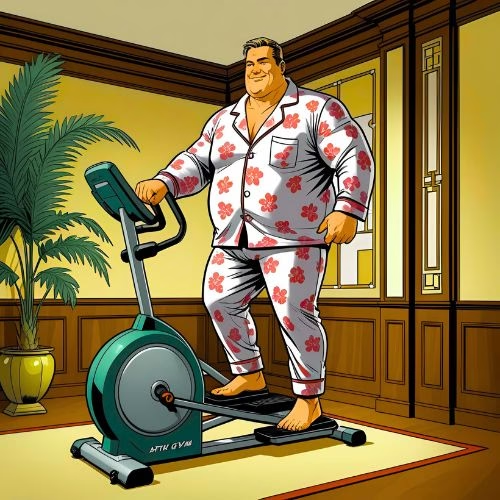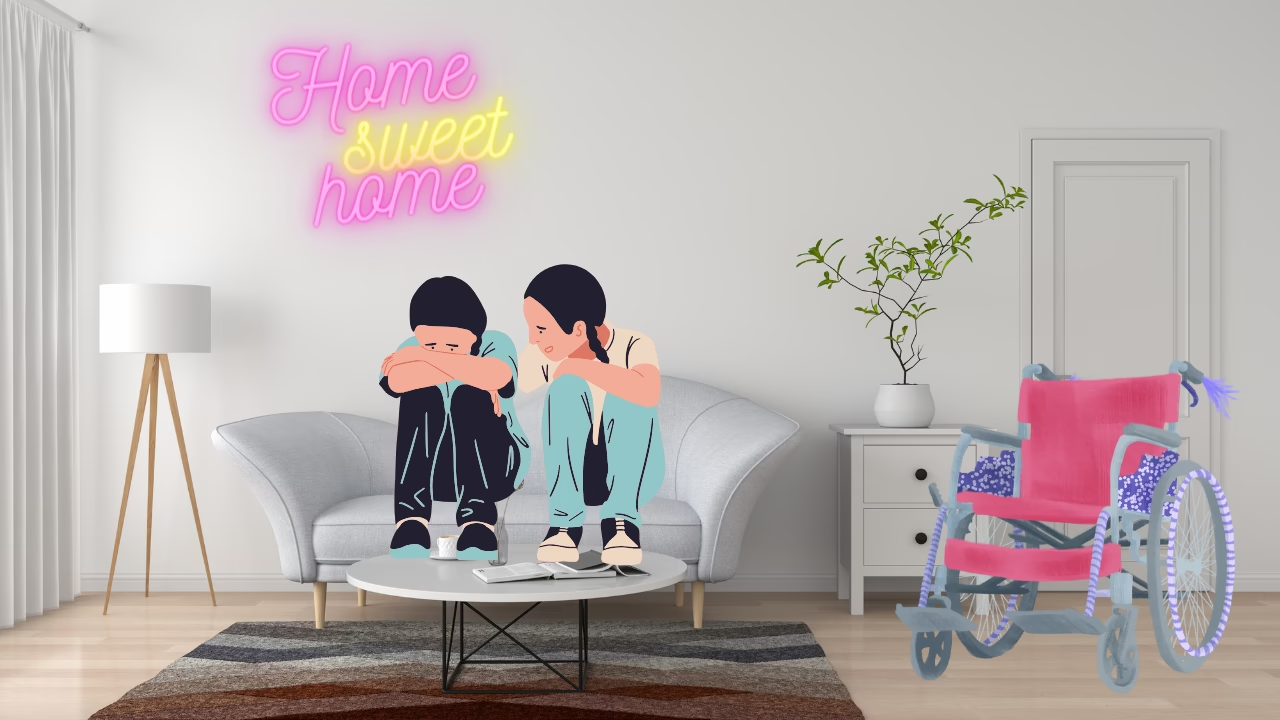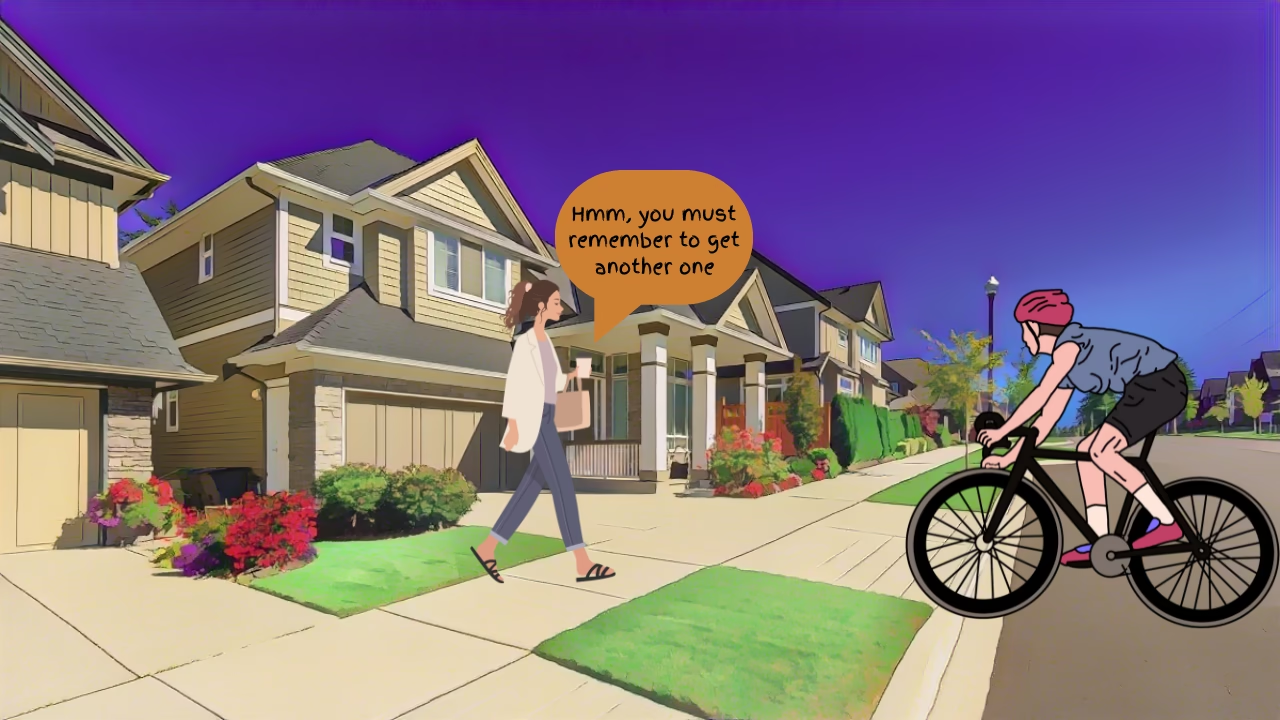🤸 Intro to High Intensity Interval Training – HIIT Workouts
Typically, when you’re housebound, energy and motivation can be slippery things. Like, one minute you’re flat on the sofa. Next, you’re itching to do something. So, that’s where HIIT workouts come in. Just short, snappy routines designed to get your heart pumping, muscles moving, and brain buzzing. Moreover, all in under ten minutes.
While HIIT stands for High-Intensity Interval Training, don’t let the name put you off. Simply, it means short bursts of movement followed by brief rest. Also, you choose the pace. You set the level. Even better, you can do it in your pyjamas if you like. Honestly, no gym, no pressure. Just a little window of effort in your day. There’s also other styles of housebound exercises explained in this article “Innovative Home Exercise“.
In this post, we’ll look at two ways to try HIIT at home:
- Fat-Burning exercises: to raise your heart rate fast, burn fat and build stamina.
- Muscle-Building: to develop and tone muscle by using your own bodyweight or home exercise equipment.
- Arm muscle strength.
- Building leg muscles.
- Toning and shaping your bum.
- Strengthen your core and tone your tummy.
So, let’s get moving! Even a few minutes can make a big difference.
🔥 What are HIIT Workouts?
HIIT stands for High-Intensity Interval Training. Actually, it’s a style of exercise where you do short bursts of effort. Like 30 seconds of squats or fast marching, followed by a brief rest. Then repeat. Happily, the whole thing can be done in under 10 minutes. After all, the idea is to work smarter, not longer.
But this isn’t just a TikTok trend or a fitness fad.
Actually, HIIT has its roots in the 1950s. Primarily, Olympic athletes used interval training to improve their speed and stamina. Then, it gained scientific traction in the early 2000s. This was mainly thanks to Dr Izumi Tabata, a Japanese researcher. Dr Tabata’s study showed that just four minutes of intense intervals could dramatically improve both aerobic and anaerobic fitness. This is now called the “Tabata method”. Since then, HIIT has been widely researched and praised by sports scientists, cardiologists, and public health bodies alike.
So, what are the benefits?
- Heart health: Incredibly, HIIT improves cardiovascular function in less time than traditional steady-state exercise.
- Metabolism: It can boost calorie burn after you’ve finished exercising. Also known as the “afterburn” effect.
- Mental health: Even short HIIT sessions have been linked to reduced anxiety and improved mood.
And here’s the clincher for housebound people. Even short HIIT workouts can be as effective as much longer routines. So, that means even if you’ve only got a ten-minute window (or less), you can still give your body and brain something truly nourishing.
💪 Choose Your Level: Low, Medium, or Max HIIT
Evidently, one of the best things about HIIT workouts is how flexible they are. Because you don’t need to be super fit or full of beans to get started. Actually, you just need a little pocket of time and a willingness to move at your own pace.
Why intensity levels matter
Simply, everyone’s body, energy, and day-to-day ability are different. Especially if you’re housebound. Therefore, by adjusting the intensity, you can choose a version of HIIT that suits your current state. Whether you’re bouncing with energy or just emerging from a foggy afternoon slump.
How to know your level
Here’s a simple way to gauge what’s right for you:
- Choose Low Impact if you’re breathless after a short walk or feel easily tired.
- Consider Medium Impact if you can move steadily without strain.
- Then, there’s Max Impact if you’re already active or having a high-energy day.
Always listen to your breathing. If you can talk but not sing, you’re in the correct zone. However, if you’re gasping or dizzy, ease back. Think, HIIT should feel like effort, but not like punishment.
🔥 Burn Fat with HIIT Workouts

Indeed, HIIT workouts are one of the most effective ways to burn fat. Even if it’s only in short bursts. They work by repeatedly raising your heart rate, then letting it recover. Then, this signals your body to use stored fat for energy. Unlike steady cardio, HIIT keeps your metabolism elevated even after the workout ends.
Originally, HIIT studies used cycling sprints on exercise bikes. These involved short, intense efforts followed by rest. But don’t worry if you haven’t got gym equipment. Instead, you can get the same benefits with simple moves like marching, jumping, or high knees. And if you do have an exercise bike (or a tin of beans, or a resistance band), that’s a bonus!
Really, the key to fat-burning is getting your heart rate up, while not necessarily dripping with sweat. That can be done standing, seated, or even lying down. As long as the movement challenges you. Just choose the Low, Medium, or Max impact version of each move depending on your energy and comfort levels today. After all, God gave us rhythms of rest and effort. So, listen to yours.
🚲 Cardio-Boosting Fat-Burning Exercises
These HIIT moves are designed to raise your heart rate fast, burn fat, and build stamina — no matter your fitness level. You’ll find an equipment version where relevant, but each one also works just as well without gear. Choose the Low, Medium, or Max Impact version depending on how your body feels today.
🚴 1. Cycling Intervals
With equipment: Use a stationary bike — pedal easy for 30 seconds, then sprint hard for 20 seconds. Rest and repeat.
No equipment: Lie on your back and cycle your legs in the air. Go slow for the rest phase, then speed up your pedalling for 20 seconds.
- Low: Gentle air cycling while lying down
- Medium: Faster cycling, maybe adding small ankle weights
- Max: High-speed bicycle legs, keeping core tight and shoulders off the ground
🏃 2. Jog, Run or March in Place
No equipment needed — perfect for tiny spaces!
- Low: Slow marching on the spot with arm swings
- Medium: Light jogging on the spot, arms at a steady rhythm
- Max: Sprint in place or do high knees with power arms
⭐ 3. Jumping Jacks or Step-Outs
Great for total-body cardio and coordination.
- Low: Step one foot out to the side at a time while raising arms overhead
- Medium: Modified jacks – one foot out and back at a time, but with more bounce
- Max: Classic star jumps – big movements with speed

🧗 4. Climbers & Crawlers
These challenge the core and increase cardio intensity fast.
- Low: Standing — lift one knee at a time with opposite arm reach (like climbing in slow-mo)
- Medium: Mountain climbers with hands on a chair or wall, alternating knees
- Max: Fast-paced mountain climbers on the floor – core tight, back flat
🥊 5. Boxing Moves
Boxing-style HIIT is brilliant for burning calories and releasing stress.
- Low: Seated arm punches — straight out, across, or up
- Medium: Standing cross punches with side steps
- Max: Fast punch combos (jabs, crosses, uppercuts) with a squat, twist, or bounce
⏱️ 7–10 Minute Fat Burn Routine (Pick Your Level)
You don’t need an hour — just a few focused minutes can spark change. This routine is designed to fit your space, time, and energy level today.
👉 Instructions:
- Pick any 4 fat-burning moves from the list above.
- Do 30 seconds of movement, followed by 30 seconds of rest.
- Complete 2–3 rounds, depending on how you feel.
- If you’re unsure where to start, begin at Low Impact and work your way up over the weeks.
💡 Example Routine (Medium Impact):
- Jog on the spot (30 sec) → Rest (30 sec)
- Modified jumping jacks (30 sec) → Rest
- Chair mountain climbers (30 sec) → Rest
- Standing cross punches (30 sec) → Rest
- Repeat for 2–3 rounds.
🌬️ Don’t skip this:
- Warm-up for 2 minutes: gentle marching, shoulder rolls, arm swings.
- Cool-down for 2–3 minutes: deep breaths, side stretches, slow step taps to bring your heart rate down gently.
🧠 Final Tips for Fat Loss at Home
- Consistency burns more fat than intensity alone. A few minutes each day will take you further than one exhausting workout a week.
- Adapt and swap moves based on how you feel. Low energy today? Go with a seated or gentle version — it still counts.
- Use what you have — a hallway, a yoga mat, or just enough floor space to stand. Movement matters more than the setup.
- Your body is not the enemy. It’s your companion through life. So honour it. Push when you can, rest when you must.
- Let your faith lift you, especially on hard days. You were never meant to do this in your own strength.
💪 Build Muscle with HIIT Workouts
Well, HIIT isn’t just a cardio superstar. In fact, it can also build and tone muscle. This is especially true when you choose movements that focus on strength, balance, and control. By using your own bodyweight, you can create powerful, effective workouts. Adding simple resistance tools like tins, resistance bands, or dumbbells can strengthen and sculpt your entire body.
🏡 Why this matters if you’re housebound:
- Primarily, muscle loss occurs quickly when movement is limited. Mainly, this is found in the legs, core, and upper arms.
- Ultimately, stronger muscles support better posture and less fatigue. Also, it improves your confidence when moving or standing.
- Overall, maintaining strength can help prevent falls and reduce pain. Further increasing your independence.
Happily, you don’t need a gym. Nor even a whole room. These moves are designed to work with your space and ability level.
🙌 Choose Your Intensity:
- Low Impact: Simply, focus on slow, controlled movements. Great for flare-ups, fatigue, or when you’re easing in.
- Medium Impact: Add in more depth or light resistance. Still gentle, but more challenging.
- Max Impact: Increase the pace or reps, or use stronger resistance to push strength and endurance.
Also, equipment is optional, but valuable if you’re ready. Even tins of soup, a rolled towel, or a band loop can make your workout more effective.
🦾 HIIT Workouts to Target: Arms

Notably, strong arms help with everyday tasks like pushing doors, lifting groceries, or even getting up from a chair. Therefore, this section includes push and pull movements that can be done with or without weights.
Push Variations
- Low: Wall push-ups (stand at arm’s length from a wall and push gently)
- Medium: Table or chair push-ups (use a sturdy surface for incline)
- Max: Floor push-ups or plank-to-push (transition from forearms to hands)
Bicep & Shoulder Moves
- Low: Seated tin-can curls (use water bottles or tins, curl slowly)
- Medium: Standing punches or light weights (keep it steady)
- Max: Punch combos with squats, fast uppercuts, or resistance band rows
🦵 Target: Legs
Now, leg strength improves circulation, posture, and stamina. Even basic moves can wake up sleepy muscles and stabilise your whole body.
Squats & Lunges
- Low: Half squats or seated leg lifts (contract muscles gently)
- Medium: Full squats or standing knee lifts (steady pace)
- Max: Jump squats or lunge pulses (for strength and power)
Glutes & Hamstrings
- Low: Seated hamstring curls (kick heels back from a chair)
- Medium: Glute bridges on a mat or bed
- Max: Single-leg bridges or jump lunges
🍑 Target: Bum
Yes, it overlaps with legs — but “glute workouts” are a huge search term! Not only that, but the bum is key for posture and lower-back support.
Glute Activators
- Low: Standing leg lifts (lift leg behind gently)
- Medium: Donkey kicks or clam shells (lying on side, controlled)
- Max: Resistance band kickbacks or jump squats
Stability & Balance
- Low: Chair-supported balance taps (tap one foot out in front or to the side while holding onto a chair for support).
- Medium: Standing one-leg holds (lift one foot slightly off the ground and hold for balance).
- Max: Reverse lunges with a knee drive (step back into a lunge, then drive front knee up as you rise).
🧘 Target: Tummy / Core
Frankly, a strong core makes movement safer and easier. Essentially, it supports breathing, posture, and balance, and helps prevent injury.
Core Engagement
- Low: Seated tummy pulls (sit tall, gently pull belly in toward spine) or lying leg slides (lie on back, slide one heel out slowly then return).
- Medium: Glute bridge with a belly squeeze (lift hips while squeezing glutes and engaging core), standing oblique crunches (elbow to knee side-crunch while standing).
- Max: Bicycle crunches (lie on back, alternate elbow to opposite knee) or plank variations (hold a plank on hands or elbows, add movement if able).
Rotation & Control
- Low: Seated torso twists (sit upright, gently rotate upper body side to side).
- Medium: Standing knee-to-elbow (bring opposite elbow to lifted knee, alternating sides).
- Max: Russian twists (sit back slightly and twist side to side) or plank jacks (in plank, jump feet out and in).
⏱️ 7–10 Minute Muscle-Building HIIT Routine (Choose Your Focus)
Honestly, you don’t need an hour to build strength at home. Nor even half an hour! Indeed, only 7–10 minutes of focused effort can make a real difference. Especially when you’re consistent.
Instructions:
- Choose 1–2 moves from each target area above (arms, legs, bum, core)
- Do 30 seconds of movement, followed by 30 seconds of rest
- Repeat for 2–3 rounds, depending on time, symptoms, and energy.
- Option: Pick one body part per session, or rotate through the week (e.g., legs on Monday, core on Tuesday, rest on Wednesday).
💡 Hint: Track how you feel each day. So, muscle soreness is OK. However, pain or exhaustion means it’s time to scale back.
🙌 Encouragement for Housebound Strength
Frankly, building strength when you’re housebound takes digging deep and creativity.
💪 Strength isn’t about size.
Actually, strength is about function, confidence, and endurance. Honestly, can you get up from the sofa more easily? Truly, can you lift a basket of laundry without wincing? Well, that’s real progress.
🌱 Even small moves matter.
Truly, tiny, consistent efforts keep your body awake and prevent long-term weakness. Definitely, five minutes is still forward motion.
🙏 God created you with the ability to adapt and heal.
Remember, you’re allowed to start small. Undoubtedly, you’re allowed to rest. Absolutely, you’re allowed to be proud of every step.
🛏️ And yes, rest days count.
Remarkably, muscles grow during recovery. So, honour that rhythm.
🙌 How to Fit HIIT Into Your Day When You’re Housebound
Frankly, giving time and motivation to exercise can feel tough when you’re housebound. Still, small changes add up faster than you think.
So, here are some tips to make it realistic and enjoyable:

- Use timers or apps to keep workouts short and focused. A 7-minute timer can be a great motivator to get moving without overwhelm.
- Create a playlist with your favourite upbeat songs to boost energy and keep you engaged. After all, music can turn exercise into a fun rhythm rather than a chore.
- Schedule your workouts like appointments. Just pick a consistent time that fits your daily routine. Even if it’s just 5–10 minutes. However, if 10 minutes feels too long, consider breaking it up. Maybe, make it two 5-minute bursts spaced throughout your day.
- Celebrate small wins — every movement counts! Definitely, track your progress, no matter how tiny. Helpfully, it builds momentum and confidence.
- Be kind to yourself. Consider that some days will be easier than others. Always listen to your body. Then, rest when needed, and return when refreshed.
Remember, building a habit is a journey, not a race. Truly, each step forward, however small, is a victory worth celebrating.
🌟 Conclusion to HIIT Workouts
Whether you’re just starting out or looking to shake up your routine, try HIIT workouts. Effectively, they offer a powerful, adaptable way to burn fat and build strength. Regardless, whether in short bursts at home. Really, it’s not about perfection or pushing through pain. Instead, it’s about honouring your body’s rhythms and celebrating every move you make.
So, start by choosing the right level for you today — Low, Medium, or Max impact. Then, focus on your goals. Slowly, you’re taking steps toward a healthier, stronger you. Next, keep faith in the process. Simply, listen to your body, and trust that small efforts compound into lasting change.
Finally, you’re not alone on this journey. Ultimately, every little burst of effort is a victory. So, with patience and kindness, you’ll get there. Simply, one step, one breath, one heartbeat at a time.
📚 Evidence-Based HIIT Resources
You don’t need to wade through medical journals — but if you’re curious about the science behind HIIT, these are a good place to start:
- NHS Live Well – What is HIIT?
- Harvard Health – The truth about high-intensity interval training
- Mayo Clinic – HIIT: Benefits and how to get started
- British Journal of Sports Medicine – HIIT for cardiometabolic health
- ACE Fitness – Beginner HIIT workouts you can do at home
🧪 Foundational HIIT Study (Tabata Protocol)
- Study Title: Effects of moderate-intensity endurance and high-intensity intermittent training on anaerobic capacity and VO2max
- Author: Dr. Izumi Tabata et al. (1996)
- Summary: Compared steady-state cycling with 4-minute high-intensity intervals. Found that short bursts of effort significantly improved both aerobic and anaerobic fitness.
- Link to complete study (PubMed)






